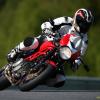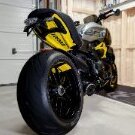The Pace 2.0 (inspirerende om trygg og morsom kjøring)
-
Fremtidige hendelser
Ingen kommende hendelser funnet -
Aktive Tråder
-
Sjekket innlegget ditt i dag og bestilte komplett til front 😀 gleder meg...👍
-
Av stoppitide · Skrevet
Bransjen rører på seg, kan man lese. I dag var både jeg, endel andre og Arnestad fra Triumph-ex-storselger AMD innom på åpningen av Oslo-filialen til AGM. Er det sannsynlig at disse dramatiske endringene gavner importørene/merkene eller feilberegner de forhandlernes posisjon etter mange års kundebearbeiding? Hyggelig dag likevel. Kaffemaskin og spotlights i taket. -
Av Hans Bjarne Meisler · Skrevet
Hei, hvilke datoer er denne turen? Og hvor mange dager? -
Av Trond Bentzen · Skrevet
Da fungerte det, rom bestilt 🙂 -
Av Thomas Scharrer · Skrevet
Hei, dette høres veldig spennende ut. Jeg blir med, hoteller er bestilt.
-




Anbefalte innlegg